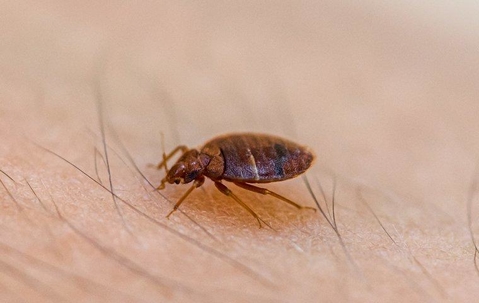What do you do when you wake up in the morning? Maybe you get out of bed right away, or maybe you lay in bed, let the alarm run, watch the sunlight stream in, and… start scratching your arms?
Everyone loves lying in a warm bed, and that includes bed bugs. These pests are notorious for ruining your sleep, wreaking havoc on your skin, and staying in your Iowa home no matter how many times you wash your sheets. Whether you’re dealing with bed bugs or worried about catching them, here’s how these nasty critters might end up in your Bettendorf home.
Bed Bug Identification Tips
Usually, homeowners don’t know they have a bed bug infestation because they see bugs crawling around the bedroom. Rather, homeowners wake up with small, itchy welts that can last several days. Since these pests are quiet, undetected insects, what do they actually look like?
Bed bugs only grow to about 5 mm long, or about ⅕ of an inch. These pests are light brown or reddish brown in color, and often grow darker once they’ve ingested blood. That’s why bed bugs like your home. Overnight, these nocturnal critters drink the blood from exposed skin on your body – usually your forearms and shins.
Bed bugs have a small head and larger, apple seed-shaped body, as well as six legs and two short antennae. If you see them in your bed or around your furniture, it will most likely be at dusk.
How Did Bed Bugs Get In My Home?
Bed bugs are slow, tiny creatures. They don’t jump, they don’t have wings, and they don’t move fast. So, how do they get into so many homes?
These pests are hitchhikers. They move from place to place on people. A bed bug will latch onto an article of clothing or a book bag and stay there until you get home. Only then does it crawl out and start crowding around the couch or bed. Bed bugs are usually picked up in high-traffic areas, such as schools, airports, bus stops, hotels, and libraries. Additionally, they might already be hiding in someone’s used furniture and appliances, or even in grocery bags or shipping boxes.
Once they get in the house, they’re nearly impossible to remove using DIY methods. These pests can fit in the tiniest of spaces, they blend in easily with their surroundings, and they typically only come out when you’re asleep. Rarely, an individual can have an allergic reaction to the bites. More commonly, having bed bugs can cause lots of psychological stress, as homeowners hate falling asleep in a bed with bugs.
Bed Bug Prevention Tips
Since bed bugs are so hard to remove, your best bet is to prevent them from getting in. You can try to do this in a few ways:
- Frequent vacuuming. When they aren’t hiding in closets or cracks, bed bugs might camp out in the carpeting undetected, so vacuuming the house prevents them from latching on to a far more frustrating hideout.
- Reduce home clutter. Bed bugs like cool, dark spaces, so clutter is the perfect place for them during the day.
- Check your bags when you get home. If you bring your personal belongings to high-traffic places, bed bugs might latch onto these bags, especially if you’re travelling with suitcases. Inspect your bags thoroughly, and if you think you see bugs, secure your belongings in a plastic bag and close it up with a no-pest strip for two weeks. Make sure you place this plastic bag in a fumigated room.
- Buy a bed encasement. That way, if bed bugs are in your mattress, they cannot get out to feed on you.
Unfortunately, bed bugs are now common pests because these prevention tips don’t always work. These pests are notoriously sneaky and can get past even the sharpest of eyes. If you find yourself waking up with scratchy bumps every morning, don’t deal with the problem yourself. Rather, call the experts at Quik-Kill Pest Eliminators, and we’ll prescribe a heat treatment that will eradicate these pests.

